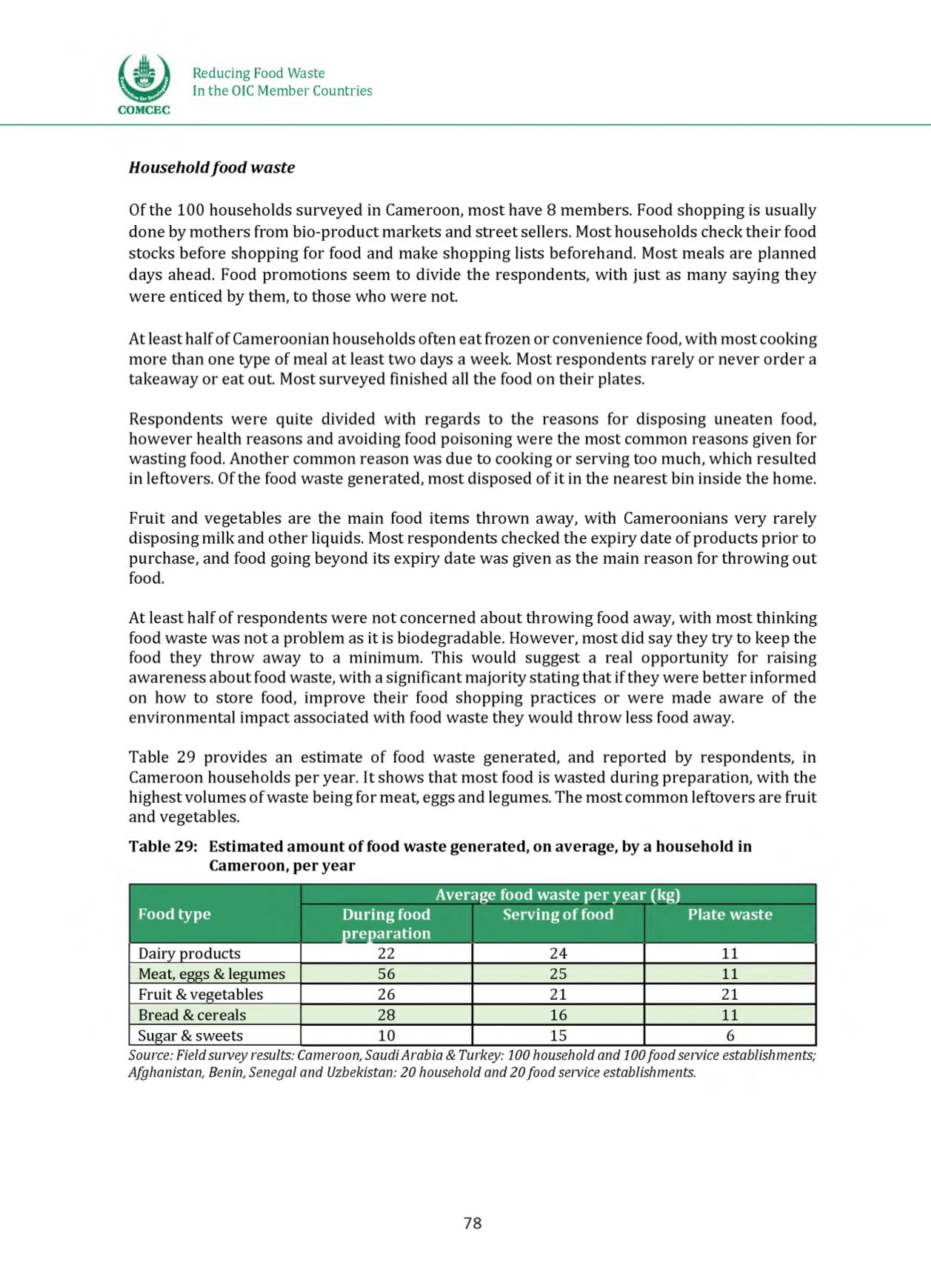

Reducing Food Waste
In the OIC Member Countries
COMCEC
Householdfood waste
Of the 100 households surveyed in Cameroon, most have 8 members. Food shopping is usually
done by mothers from bio-product markets and street sellers. Most households check their food
stocks before shopping for food and make shopping lists beforehand. Most meals are planned
days ahead. Food promotions seem to divide the respondents, with just as many saying they
were enticed by them, to those who were not.
At least half of Cameroonian households often eat frozen or convenience food, with most cooking
more than one type of meal at least two days a week. Most respondents rarely or never order a
takeaway or eat out. Most surveyed finished all the food on their plates.
Respondents were quite divided with regards to the reasons for disposing uneaten food,
however health reasons and avoiding food poisoning were the most common reasons given for
wasting food. Another common reason was due to cooking or serving too much, which resulted
in leftovers. Of the food waste generated, most disposed of it in the nearest bin inside the home.
Fruit and vegetables are the main food items thrown away, with Cameroonians very rarely
disposing milk and other liquids. Most respondents checked the expiry date of products prior to
purchase, and food going beyond its expiry date was given as the main reason for throwing out
food.
At least half of respondents were not concerned about throwing food away, with most thinking
food waste was not a problem as it is biodegradable. However, most did say they try to keep the
food they throw away to a minimum. This would suggest a real opportunity for raising
awareness about food waste, with a significant majority stating that if they were better informed
on how to store food, improve their food shopping practices or were made aware of the
environmental impact associated with food waste they would throw less food away.
Table 29 provides an estimate of food waste generated, and reported by respondents, in
Cameroon households per year. It shows that most food is wasted during preparation, with the
highest volumes of waste being for meat, eggs and legumes. The most common leftovers are fruit
and vegetables.
Table 29: Estimated amount of food waste generated, on average, by a household in
Cameroon, per year
Food type
Dairy products
Average food waste per year (kg)
During food
Serving of food
Plate waste
preparation
22
24
11
Meat, eggs &legumes
56
25
11
Fruit &vegetables
26
21
21
Bread &cereals
28
16
11
Sugar & sweets
10
15
Source: Field survey results: Cameroon, SaudiArabia & Turkey: 100 household and 100food service establishments;
Afghanistan, Benin, Senegal and Uzbekistan: 20 household and 20food service establishments.
78
















